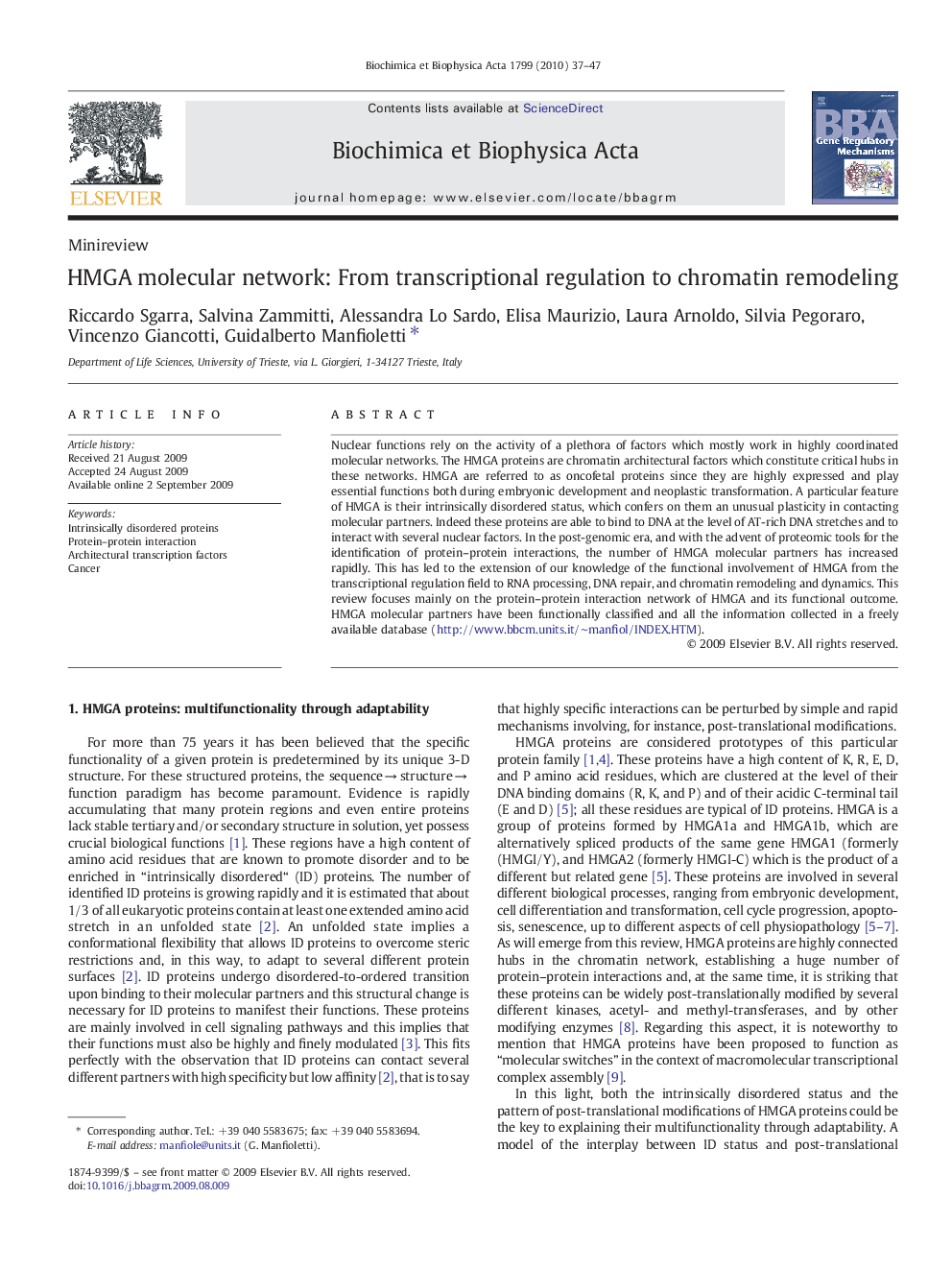| Article ID | Journal | Published Year | Pages | File Type |
|---|---|---|---|---|
| 1946755 | Biochimica et Biophysica Acta (BBA) - Gene Regulatory Mechanisms | 2010 | 11 Pages |
Nuclear functions rely on the activity of a plethora of factors which mostly work in highly coordinated molecular networks. The HMGA proteins are chromatin architectural factors which constitute critical hubs in these networks. HMGA are referred to as oncofetal proteins since they are highly expressed and play essential functions both during embryonic development and neoplastic transformation. A particular feature of HMGA is their intrinsically disordered status, which confers on them an unusual plasticity in contacting molecular partners. Indeed these proteins are able to bind to DNA at the level of AT-rich DNA stretches and to interact with several nuclear factors. In the post-genomic era, and with the advent of proteomic tools for the identification of protein–protein interactions, the number of HMGA molecular partners has increased rapidly. This has led to the extension of our knowledge of the functional involvement of HMGA from the transcriptional regulation field to RNA processing, DNA repair, and chromatin remodeling and dynamics. This review focuses mainly on the protein–protein interaction network of HMGA and its functional outcome. HMGA molecular partners have been functionally classified and all the information collected in a freely available database (http://www.bbcm.units.it/∼manfiol/INDEX.HTM).
